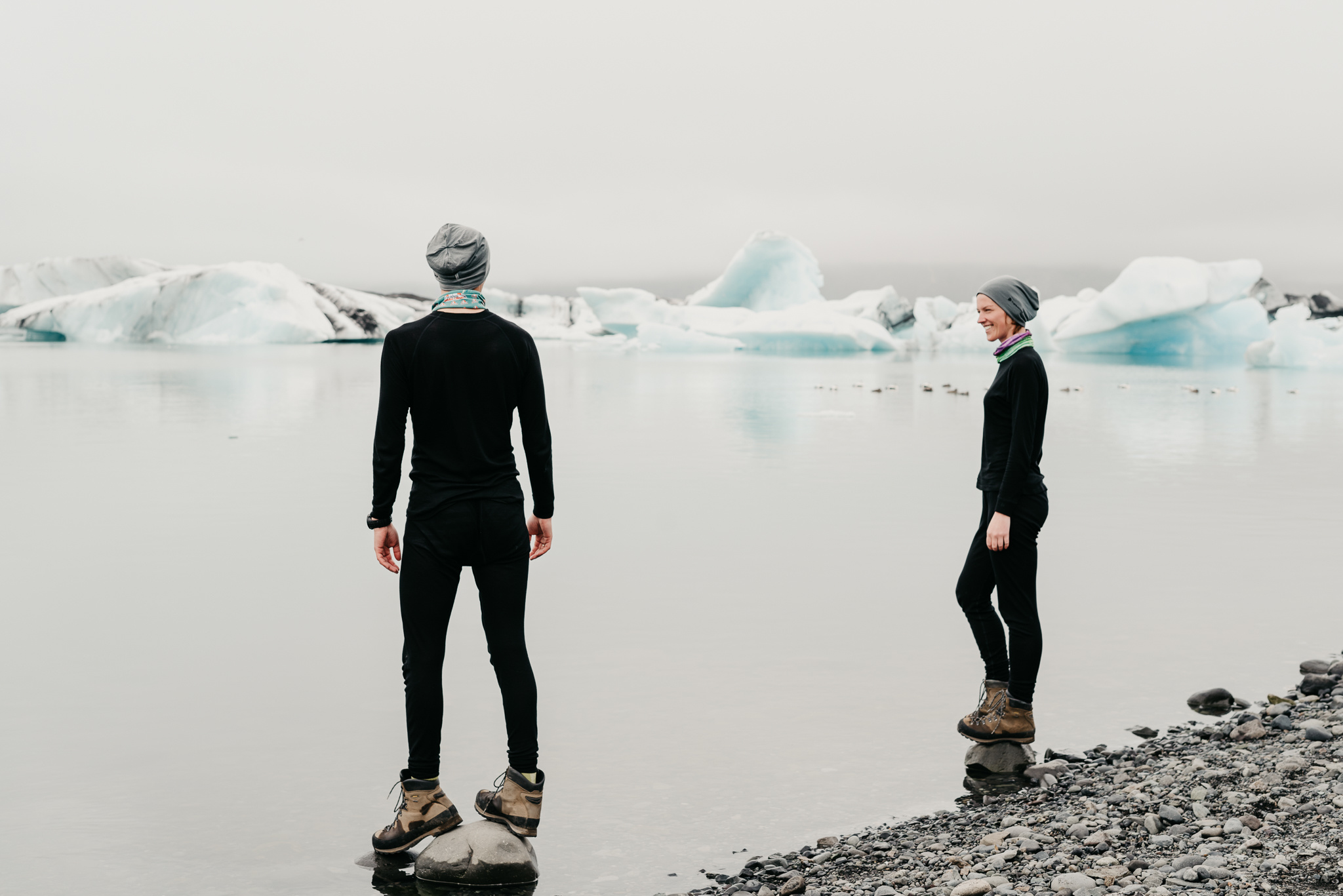Merino or Synthetic Baselayers - how do you choose?
- Posted on
- By Cindy Doyle
- Posted in Merino or Synthetic?, What baselayer to choose

How do you go about choosing the baselayer that's right for you? Getting it right or wrong can really impact on your performance and your enjoyment of whatever activity you’re doing.Getting it wrong can ruin your day. Getting it right though can make you feel like a well oiled machine! Find out how to choose what's best for you, your activity, your ethics and your pocket!
Baselayers.
Meaning the clothing layer closest to your skin, your base layers are the foundation of your layering system. People also refer to baselayers as skins, thermals or underwear (long johns etc.) or technical tees.
Getting it right or wrong can really impact on your performance and your enjoyment of whatever activity you’re doing. If you’re too hot, you will tire more easily and sweat more making both your body and your base-layer work harder unnecessarily. Getting it right though can make you feel like a well oiled machine!
Top Tip: If you’re going to be working hard, you should feel on the cool side before you start.
What do we want our baselayer to do?
Ideally our baselayer should help us regulate our body temperature and also wick moisture away from our sweating skin to the outside of that layer either to evaporate if it’s our only layer, or to be wicked through our mid-layer too.
How does a baselayer help us regulate our body temperature?
The main way your base layer does this is by preventing you from getting too hot or too cold – which it achieves by virtue of its breathability, ability to wick moisture swiftly away from your skin and by being an additional layer – some providing more insulation than others. We also need to choose our baselayers keeping in mind how our own body works (not what worked for our mates), the intended activities and the likely external conditions we will be working in.
Why do we need our baselayer to wick moisture away from our skin?
The human body is pretty amazing at regulating its temperature, and your baselayer needs to work just as cleverly. Our body dumps excess heat through perspiration, so that when we sweat, that water evaporates from our skin to cool us down.
If your baselayer clothing isn’t wicking the moisture forward towards the air or your next layer, it means it’s absorbing the water instead and you will feel uncomfortable and damp.
Having wet clothing next to the skin will greatly increase your heat loss through conduction, evaporation and convection. Even on a relatively nice day, this can be uncomfortable, but in cold and/or windy weather conditions, it has the potential to cause hypothermia.
 Sometimes even in cold conditions, we strip to our baselayers
Sometimes even in cold conditions, we strip to our baselayers
So what works as a baselayer and what doesn’t?
First off, never wear pure cotton on the hill. It just acts like a sponge soaking up all the water, whether it’s your own perspiration or the rain and you will be left feeling cold and miserable. That includes your socks, jocks and bras.
Generally, synthetic baselayers tend to be cheaper to pick up, so when you're making your first tentative steps into the mountains and seem to be forking out for boots, packs, jackets etc., etc. these can be a great place to start.
Synthetic fibres
Synthetic fibres such as polyester and polyamide (nylon) are often used together in baselayers, usually with some elastane thrown in for good measure to help the garment move with you and retain its shape.
Polypropylene is another common fabric often used in synthetic baselayers. It has outstanding wicking properties and dries super quickly. So, if you are profuse sweater, baselayers made from this or containing high proportions of it, might well be worth looking at.
Polyester is another fantastic wicking fabric – fleece is a great example of this. It’s hydrophobic and very breathable and also provides decent insulation from the weather.
Both polypropylene and polyester are awful absorbers of smells though! Smells that can be difficult to get out even after washing. Not an ideal trait for a piece of clothing intended for next to the skin wear. It’s how nicknames like ‘Smelly Helly’ came about. Polyamide is better at rejecting the smells but not as good at the other stuff, so they’re often bunked in together in an effort to get the best of both worlds.
It does mean though that if you're doing a multi-day trip, you and your very understanding tent/hut buddies will have to tolerate the smell or you'll have to pack more.
Because these fabrics are synthetic, their production is almost completely reliant on petroleum, although some inroads are being made to manufacture plant-based versions and some brands are now creating synthetic base-layers from recycled plastics or fabrics or a combination of the two. A step in the right direction.
They also tend to be very durable, so you'll probably get tired of wearing them or the smell of them sooner than they physically wear out, so there is that. You will be washing them after every use which isn't ideal for the environment and I have read that this releases microplastics into the water table.
 Merino Wool in the Summer
Merino Wool in the Summer
Merino wool
Merino Wool on the other hand is a natural, renewable and sustainable fabric, so once you know the sheep are well treated, (unless you’re vegan), this is a more eco-friendly choice. Merino is usually a more expensive option, but most people see it as an investment. Be warned though. If you get one. You will be back for more. It's very difficult to wear synthetic after enjoying the benefits of wool (in my humble opinion)!
Merino wool has natural anti-bacterial properties meaning you can wear the same baselayer day after day after day and it still smells fresh! I didn’t believe it myself until I put it to the test on a 6 day adventure. This means you won’t need to wash it as often, which will help with the longevity of your baselayer.
Merino wool also has excellent breathability properties and although you might think of it more as an insulator, which it is, believe it or not, it can also help keep you cool in hotter weather. Provided of course you’re wearing a lighter weight version, 120gsm for instance.
Wool is a better insulator too - in a recent trip to Svalbard, I did not encounter a single local who wore synthetic. Everything that could be made from wool or leather was made from those materials. A vegan nightmare I would imagine! But wool went up another notch in my estimation.
What are the disadvantages of merino wool? The natural fibres aren’t quite as durable as their synthetic counterparts, but not having to wash it so often does help. Expect some pilling (those little balls), but I've have my 100% merino base-layers for several years, I wear them in everyday life, not just when venturing into the hills and they are still going strong.
Many merino base-layers have some synthetic fabric in there too to enhance durability and also to improve the wicking capabilities – merino does this job very effectively, but synthetic fabrics do win out here!
Just because a brand advertises its baselayer as merino does not necessarily mean that it is 100% merino – so check that label!
Most merino baselayers have a bit of synthetic thrown in – anything from 5% to 60% of a merino base-layer can be synthetic in fact. Some baselayers also use a two-layer system with the thermal properties of the wool on the outside and the superior wicking synthetic fibres next to the skin. This might be the ideal scenario for many eczema sufferers and others with sensitive skin, although choosing a merino wool baselayer with a low micron count can also help with this.
If you want all the advantages of merino however, you should choose a baselayer with at least 80% merino.
Once you’ve decided you want merino, you are then faced with an astounding range of weights – it’s a bit of a minefield, but suffice to say, the higher the gsm (grams per square metre), the warmer or more insulating your baselayer will be. How many gsm you should choose will depend on the usage.
If you will be stationary a lot of the time, a higher weight is very useful. My 260gsm 100% merinos get worn mostly when marshalling races or when sleeping in a tent in the Arctic. I do use the top at work too though – as the shop can have a bit of a draught and I consider myself to be a person who feels the cold. I wear a hat when I’m doing sedentary tasks too.
Having said that, when moving, even in Arctic conditions, I tend to choose lower weights and layer up from there. (One notable exception hiking in -35C). My aim is to avoid sweating in the first place and have both myself and my clothing working as efficiently as possible and trust me, my body’s thermoregulator needs all the help it can get.
Ronan on the other hand, like many men, doesn’t feel the cold in the same way and doesn’t own anything above 200gsm. He favours his hooded 160gms though, practically living in it for weeks on end in the Arctic Circle.
So… Are you any the wiser or even more confused about your choices? You can browse our baselayer tees here and our baselayer pants here, now that you have a better idea of what might suit you, you'll be able to make an informed decision!
 The infamous merino 160 hoody
The infamous merino 160 hoody

